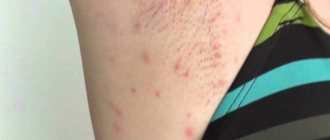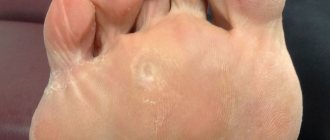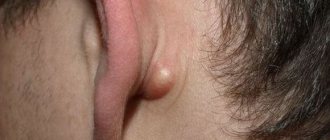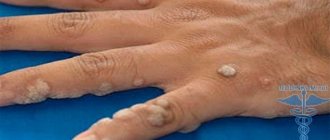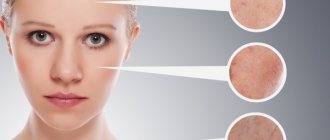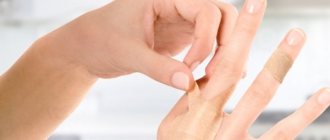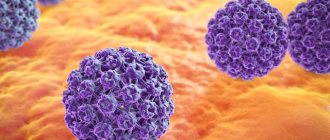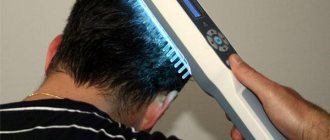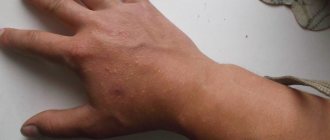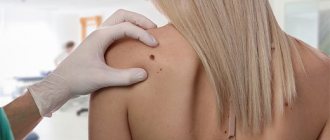The pain that appears after a puncture of the lobe occurs quite often. After ear piercing, you need to clean the piercing site every day. This is the only way you can protect your body from viruses and microbes entering the area where the skin is broken. If seals form at the puncture site over time, you should consult a cosmetologist.
If you don't take care of the ear, atheroma will form. It is subsequently removed surgically. The appearance of atheroma is caused by dysfunction of the sebaceous glands. What to do if a lump forms after an ear piercing, we will discuss in this material.
Causes of a lump after a puncture
The occurrence of growths on ear piercings depends on several reasons, and each type of bumps on the ear differs in its own structure, level of health hazard and elimination method. The most common causes of lumps after ear piercing are:
- dirty instrument;
- poor quality decoration;
- allergy to the material;
- improper hole maintenance;
- incorrect jewelry size;
- individual characteristics.
However, when independently finding out the reasons, it is impossible to say what type of existing growth on the ear appeared as a result of the puncture. Such clarification can only be made by a medical specialist - after an examination and the necessary diagnostic procedures.
Scar
A keloid scar is a raised, abnormal growth that appears on the skin after damage. This problem with ear piercing occurs much more often in adults than in children. This is largely due to some changes in the regenerative system, which is why connective tissues tend to actively grow. Experts usually indicate the following reasons for the development of keloids:
- genetic predisposition;
- immune system disorders;
- the result of exposure to infection;
- hormonal disorders, etc.
Depending on individual characteristics, such a growth next to the puncture can reach a certain size and stop growing, or it can grow for a long time. As a result, the presence of a keloid becomes not only an aesthetic defect, but also a medical problem.
Atheroma
The most common growth inside the ear after a piercing is atheroma. This formation is a benign tumor and is formed from fatty tissue. The causes of such a lump on the ear are not known for certain, but experts indicate the following factors as possible:
- violation of metabolic processes;
- wrong lifestyle;
- endocrine system disorders;
- blockage of glandular ducts.
Typically, atheromas look like dense, round formations and easily move under the skin, remaining almost invisible. However, it is necessary to point out that they can become inflamed - redness on the skin, temperature, soreness appear, and the volume of the lump increases. This explains why such education is dangerous.
Reference! The second, more common name among the population for such neoplasms is “wen.”
Infection
Infection of the wound part of the hole in the ear can also lead to the appearance of a lump on the ear. In this case, the following sources of infection should be identified:
- unsterile instrument or decoration;
- improper care of a new puncture;
- frequent contact of the puncture area with a hat, hair, etc.
As a result of the infectious origin of the growth, a focus of inflammation immediately appears, which is easily identified by elevated temperature, redness and the gradual appearance of an abscess on the surface. Pain after ear piercing, which persists and increases for a day or more, is also a direct sign of infection.
Infection of an old piercing
When a puncture in the ear has already healed for a long time, you should not deny the possibility of any growths in its area. The cause of this problem is an infection that usually gets into the puncture area as a result of the following circumstances:
- touching ears with contaminated hands;
- allergic reactions to metal;
- ear piercing damage;
- bacterial infections of the ear area.
However, regardless of the reasons and period of occurrence of the growth, it is necessary to solve the emerging problem.
Symptoms and signs
A round seal, soft but dense, can be discovered by chance when putting on jewelry, since it often may not cause any discomfort , but only until it becomes inflamed . As a rule, atheroma does not differ in color from normal skin and, apart from cosmetic discomfort, does not cause inconvenience. It can be defined as a mobile, smooth and dense formation that does not cause pain. The sizes can be completely different.
A traumatic tumor is always inflammatory in nature and causes discomfort.
Pimple or lipoma
most often resembles ordinary acne in appearance , although it can be associated with both inflammation of the sebaceous glands and inflammation of the hair follicles, when clogged, pus is formed. Inflammation is fraught with pain, redness, local fever, and sometimes general fever, weakness and deterioration of well-being. Such symptoms indicate an inflammatory process and should not be ignored under any circumstances. The pimple may be painful, red, and hot.
It is important! If symptoms of inflammation appear, you should immediately consult a doctor.
What to do at home
Trying to solve the problem of a growth on the ear at home is impossible, since there are risks of spreading the infection and developing other complications under the influence of the existing pathology. At the same time, before contacting a specialist, you can take some measures yourself:
- If the growth near the hole is small, you need to remove the jewelry.
- Be sure to treat the area of inflammation with a disinfectant solution.
- If there is a wound, you can apply antibiotic ointment.
Sometimes people recommend the following methods for getting rid of pustules on the ear:
- Apply cut aloe leaves.
- Lubricate the area of growth with “Star” balm.
- Use Vishnevsky ointment.
These methods are designed to eliminate suppuration. However, it is not recommended to use dubious methods, since it is unknown what pathology is present in a particular case and even if the remedy helps, the consequences of such treatment will be noticeable.
Attention! You should not try to squeeze out the purulent contents or knead the existing lump on your own. This can lead to infection entering the main systemic circulation and increasing the area of the lesion on the ear.
Possible consequences
According to doctors’ recommendations, it is better to remove the atheroma in order to avoid its degeneration into fatty phlegnoma in case of infection. Since phlegnoma is located close to the blood vessels that provide nutrition to the brain, it is very dangerous. Delayed treatment can lead to adverse consequences, including death.
Treatment of atheroma should be carried out only by a specialist. To prevent atheroma, it is recommended to exclude all fatty, sweet and starchy foods from the diet.
You need to clean your ears in a timely manner; for this it is better to use soap and water or a special scrub. By following these simple preventive measures and avoiding mechanical damage to the ear, the likelihood of a ball appearing on the earlobe is minimal.
Should I see a doctor?
The appearance of any growth on the ear in the area of the puncture is a cause for concern, regardless of the pain and inflammation of the area. Only a medical specialist will be able to determine the type of neoplasm that has arisen, the cause of its occurrence, check the risks to human health and determine the optimal treatment method. Typically, such problems should be addressed to the following specialists:
- therapist;
- dermatologist;
- surgeon
Sometimes it is possible to be redirected for additional consultation to an otolaryngologist, since the hearing organs are nearby.
A ball has appeared in my earlobe and it hurts. What could it be?
There may be several reasons why a painful ball has formed inside the earlobe. To establish what exactly causes its appearance, you need to take into account the location of formation, the type of compaction, how mobile it is and how it behaves when pressed (pain, change in color and temperature of the skin).
- The most common reason for the appearance of a ball in the earlobe, which hurts when pressed, is atheroma (wen). Don't immediately panic at this name. Atheroma is, of course, a tumor, but a benign one. It is formed from fat cells.
How to treat a lump
When a neoplasm occurs due to infection of the area and an abscess forms, a medical institution can autopsy it or prescribe the best option for drug elimination of the inflammatory focus. In the second option, the following groups of drugs must be used:
- antibiotics;
- antibacterial ointments;
- anti-inflammatory drugs;
- disinfectants.
Keloid scars and atheromas can only be eliminated surgically. The operation on this issue does not take much time and is performed under local anesthesia. There are no noticeable cosmetic defects left after the growth is removed.
Important! If the diagnosis is questionable, the neoplasm is submitted for histological examination. This is necessary to exclude the possibility of a cancerous lump.
Prevention
In order to avoid the occurrence of growths in the puncture area of infectious or keloid origin, it is recommended to follow certain rules for performing ear piercings and further care of the hole:
- Ear piercing should only be performed by a professional. To do this, it is better to contact a trusted cosmetologist or piercing salon.
- Jewelry to be worn in the ears, in the initial period and in the future, should be chosen from materials to which there is no allergic reaction.
- The dimensions of the decoration rod should be sufficiently free. The best option when choosing earrings for the first wear is to consult with the person who will perform the piercing procedure.
- It is imperative to ensure compliance with disinfection standards when performing a puncture - a sterile disposable needle, gloves and treating jewelry with alcohol.
- Mandatory care for piercing holes includes disinfecting the jewelry and the hole in the ear, as well as being careful when wearing it.
If preventative methods to avoid the occurrence of any growths on the ear did not help, a lump appears at the site of the ear piercing or near it, you need to carefully examine it, take disinfection measures and go to a specialist to eliminate the pathology. The doctor will be able to identify the problem and choose the best treatment option.
Manifestations in children
Most often, a ball on the earlobe appears in people aged 25-50 years, but the possibility of its formation in children cannot be ruled out. Children encounter this problem before the onset of puberty; from a medical point of view, we are talking about atheroma of the auricle. If you notice such a formation in a child, you should immediately consult a doctor, since in a child’s body such lumps can reach large sizes.
If a ball has formed near the girl’s earlobe and it hurts, the reason may be related to ear piercing. In this case, it is recommended to wear silver earrings rather than gold ones for some time.
From a medical point of view, the appearance of atheroma does not pose any danger, however, this phenomenon may indicate infection with AIDS. In some cases, a wen appears after unprotected sexual intercourse and is accompanied by deterioration of health, the appearance of acne and herpes.
In such cases, atheroma is localized not only in the ear area, but spreads throughout the body, in the locations of the sebaceous glands. In addition to consulting with an infectious disease doctor, it is necessary to undergo appropriate tests.
According to doctors, the appearance of atheroma may be associated with:
- Hypothermia,
- Prolonged exposure to the sun
- Improper hygiene
- Injuries to the earlobes,
- Unsuccessful ear piercing,
- acne,
- Hereditary predisposition,
- Hormonal imbalance caused by disruption of the endocrine system,
- Seborrhea,
- Wearing jewelry that is made from low-quality materials,
- Long stay in a hot, dusty room.
